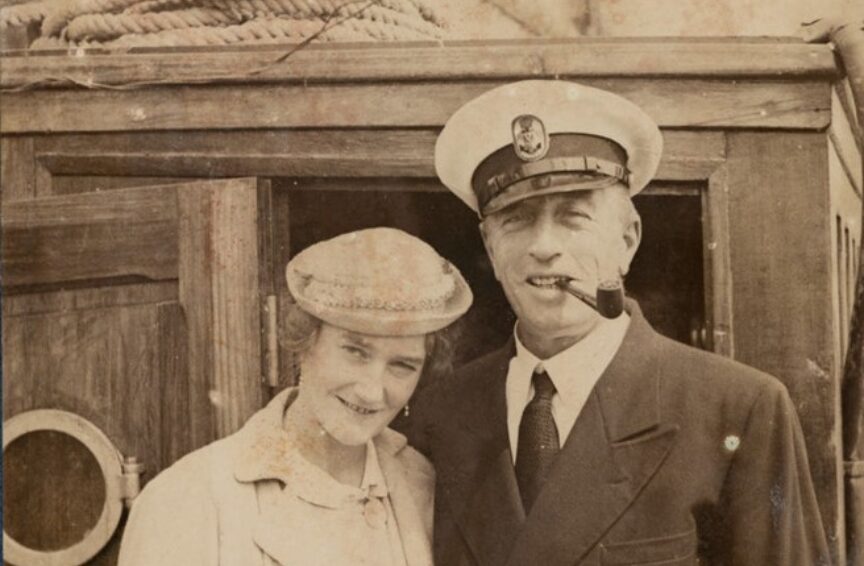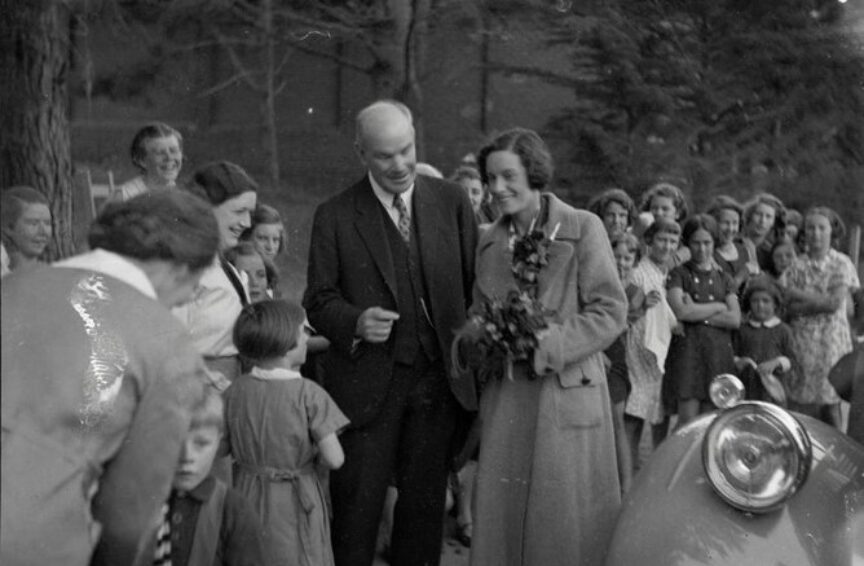PO Box 95
Lyttelton 8841
Te Ūaka recognises Te Hapū o Ngāti Wheke as Mana Whenua and Mana Moana for Te Whakaraupō / Lyttelton Harbour.
A Breton aboard the French Barque 'Boieldieu'
Claude Marie Guillo, born on 19 January 1878 in the Morbihan region of Brittany, France, embarked on a life at sea as a young man, eventually joining the crew of the French Barque Boieldieu. In May 1904, the Boieldieu berthed at Sydney, Australia for what was to be Claude’s last voyage, at the age of 26, and the first for Captain Jules Boussion, as the ship’s new commander.
This vessel, a three-masted steel barque constructed in Nantes in 1902, weighed in at 2353 tonnes gross, was 69.3 m in length, with a beam of 12.3 m, and a draught of 6.9 m. The winch house included a steam ‘donkey engine’ for lifting anchor, a common feature of the era's sailing ships. The forecastle housed over 72 fowls and several pigs, apparently destined for the galley. A pet goat, monkey, small dog, and a ship’s cat, were also aboard for the crew’s amusement.
Departing Sydney on 3 June 1904, laden with 27,313 sacks of wheat bound for Falmouth, UK, the Boieldieu initially enjoyed fine weather before encountering a series of severe southern gales that slowed her progress. Then on 27 June, just off Tini Heke Snares Islands 100 km southwest of Rakiura Stewart Island, the Boieldieu sailed into “mountainous seas” that smashed the shaft of her rudder up through the deck. Thus began her perilous drift, taking the Boieldieu south of Motu Ihupuku Campbell Island, over 600 km from Rakiura, by 10 July.
Efforts to repair the damaged rudder proved futile, with six seamen nearly drowning when hoisted over the stern into the freezing waters. Three attempts to fashion a temporary rudder failed with heavy seas taking the first two away, and the third proving too cumbersome for effective navigation. By 21 July the barque drifted as far as latitude 57° south, almost halfway to Antarctica, before southerly winds pushed her back towards Aotearoa New Zealand. By 1 August, the Boieldieu was west of the Bounty Islands, approximately 600 km southeast of Lyttelton Port.
After 45 days adrift, rescue came on 10 August when the SS Toroa out of Chatham Islands, followed by the SS Kittana, a collier of the Union Steam Ship Company (USSC), sighted the vessel just 50 km east of Godley Heads. Despite the loss of three towing lines in heavy seas, Kittana successfully towed the barque into Whakaraupō Lyttelton Harbour on the morning of 11 August. The local community warmly welcomed Captain Boussion and his intrepid crew, with the captain lauded for his efforts to maintain morale through the ordeal with the distribution of musical instruments, plenty of good food, as well as rum coffee at breakfast and wine with dinner. A British crew member, when asked his opinion of the Frenchman, cheerily stated “Tiptop! If every British skipper treated his men as he treats us there would be more British seamen in British ships”.
Subsequently, the Boieldieu was dry docked on 25 August for repairs, with the event attracting significant public interest. Crowds arrived from Christchurch to view the barque and the large makeshift rudder that had been constructed in the desperate attempt to steer her. The USSC was to be compensated £1250 (NZ$400,000) for the salvage operation. In a gesture of gratitude, the crew presented a set of vestments and an oil painting of the barque to St Joseph's Catholic Church in Lyttelton. An inscription on the painting read “Reconnaissance à Marie. Le 10 Août, 1904," or in English, "An offering to the Virgin Mary, August 10th, 1904".
The Boieldieu was in and out of dry dock twice from August into October, with work on the new rudder and the reloading of the wheat cargo finally completed in late October. However, departure was delayed when the USSC requested the Marshal of the Admiralty Court to seize the Boieldieu, pending payment of the last £600 (NZ$192,000) for the salvage. The towing fee was finally settled at the end of October, at the same time that Captain Boussion received a cable message relaying the birth of his son in France. The Boieldieu’s main and mizzen masts were decorated with bunting in honour of the event, and the ship was ready to sail with her full cargo of wheat on board, when a hull leak was found. The ship’s cargo had to then be unloaded yet again for further repairs to be made through November into December. At this point, a number of her crew were paid off, while others had simply jumped ship, with positions advertised for replacements.
Finally, around 4 am on 28 December 1904, the Tug Lyttelton towed Boieldieu from her anchorage off Te Pohue Camp Bay through the Heads to resume her journey, with the French barque safely discharging her cargo at Falmouth some 10 months after leaving Sydney. The following year she caught fire at Oakland, California, badly damaging her poop, and was twice stranded in the Gulf of Mexico in 1919. Laid up in 1921, she was broken up at Lorient in Morbihan, France in 1927.
One of those Boieldieu sailors who decided to stay on in Lyttelton Port was the young Breton, Claude Guillo, although it would appear perhaps not with the relevant authorities’ consent. Working various jobs through Canterbury and Timaru districts, Claude aka William Thomas Thomson married Helen Ann Fraser in 1914. The happy couple settled in Methven and had 10 children.
Many thanks to Jasmine Thomson for sharing her great great grandfather’s seafaring adventures!

